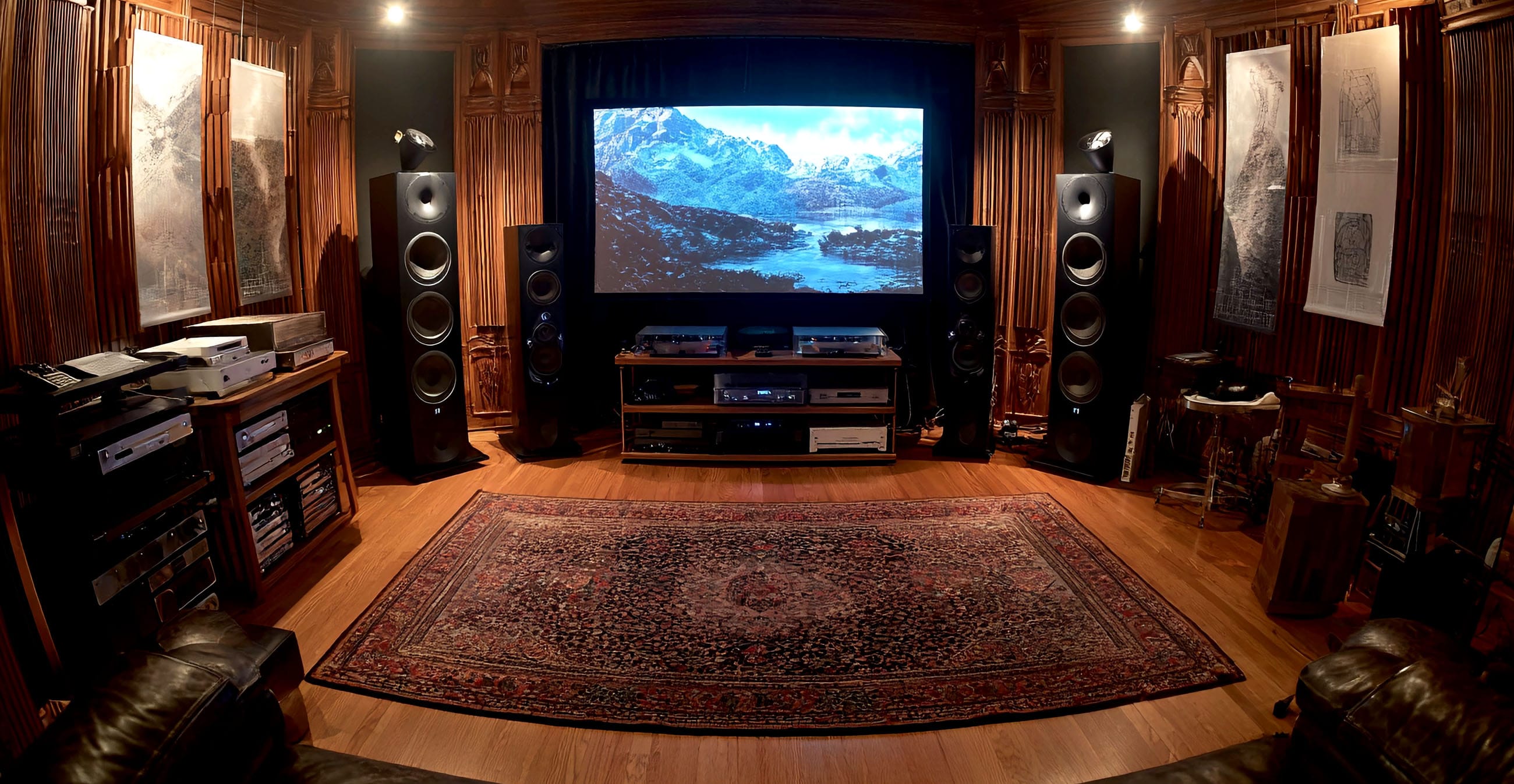Music is an audiophile’s sanctuary, where each note, from a violin’s tender vibrato to a kick drum’s visceral thump, reveals a universe of emotion. Standard wireless earbuds, bound by Bluetooth’s limitations, seem modest contenders for such sonic grandeur. Yet, with precise techniques and a reverence for sound’s transformative power, they can rival high end systems. This guide, tailored for discerning audiophiles, unveils how to sculpt high fidelity audio from any wireless earbuds through expert fit, equalizer precision, and pristine sources, weaving technical mastery with music’s soulful magic.
Mastering the Fit: The Key to Clarity
A perfect earbud seal unlocks high fidelity sound by ensuring robust bass and blocking external noise. Without it, low frequencies (20 to 250 Hz) weaken by up to 15 dB, and ambient sounds muddy delicate details, reducing the signal to noise ratio. Studies in audio engineering show a tight seal boosts bass and passive isolation by 20 to 30 dB across 500 Hz to 8 kHz, rivaling studio headphones for clarity.
- Test all ear tip sizes to achieve a snug seal, confirmed by deep sub bass in tracks like Max Richter’s “On the Nature of Daylight.” Use app based fit tests, if available, for real time seal verification.

- Choose foam tips like Comply TrueGrip, which enhance isolation by 8 to 12 dB over silicone, capturing the warmth of cello notes in Yo Yo Ma’s “Bach Cello Suite No. 1.”

- Adjust stabilizers for a secure fit during movement, preventing ear fatigue after 45 minutes, as ergonomic research shows 35 percent less discomfort with optimal fit.
- Clean tips biweekly with 70 percent isopropyl alcohol to avoid wax buildup, which can cut high frequencies (6 to 16 kHz) by 7 dB, preserving cymbal clarity in Dave Brubeck’s “Take Five.”

Equalizer Precision: Shaping the Soundstage
Most earbuds lean toward a V shaped sound, boosting bass and treble while muting midrange clarity (250 Hz to 4 kHz), where vocals and instruments like guitars thrive. Fine tuned equalization, guided by the Harman target curve (preferred by 64 percent of listeners, per Journal of the Audio Engineering Society, 2018), restores balance, unveiling a track’s emotional depth with surgical precision.
- Access the EQ through your earbuds’ app, phone settings, or apps like Wavelet. Choose a “Studio” or “Flat” preset if custom EQ is unavailable to reduce coloration.
- Tune a 5 to 10 band EQ: lower bass (20 to 100 Hz) by 2 to 4 dB to avoid muddiness, boost mids (1 to 2.5 kHz) by 1 to 3 dB for vocal clarity, and raise treble (8 to 12 kHz) by 1 to 2 dB for airiness, avoiding harshness above 14 kHz. Test with Patricia Barber’s “My Girl” for vocal nuance.

- Calibrate with reference tracks: Shostakovich’s “Symphony No. 5” for dynamic range, Steely Dan’s “Aja” for stereo imaging, or Joni Mitchell’s “Blue” for midrange warmth. Target transient accuracy within 0.5 milliseconds.

- Turn off dynamic EQ or loudness normalization, which distorts frequency balance at low volumes, skewing aural perception and dulling subtle passages.
- Apply AutoEQ’s Harman corrected presets to minimize frequency deviations by 6 to 10 dB, ensuring near ideal response, as validated by audiophile forums like Head-Fi.
Pristine Sources: The Heart of High Fidelity
Superior audio begins with superior sources. Standard earbuds rely on SBC or AAC codecs, capped at 256 to 328 kbps, compressing dynamic range by 25 percent compared to lossless FLAC (1411 kbps for 16 bit 44.1 kHz), per AES Journal (2020). High resolution sources preserve details, like the decay of a piano note or a guitar’s pluck, delivering music’s raw emotion.
- Stream from Qobuz or Tidal HiFi Plus with 24 bit 192 kHz tracks to maximize detail, even through AAC limitations. Tracks like Miles Davis’ “So What” gain richer textures.

- Store lossless ALAC or FLAC files on a 1 TB microSD for thousands of hi res tracks, avoiding Bluetooth compression for offline playback.
- Pair with AAC compatible devices (e.g., iPhones or newer Androids) for a 256 kbps bitrate, boosting signal to noise ratio by 6 dB over SBC’s 192 kbps, per Bluetooth SIG data.
- Skip low bitrate sources like YouTube (128 kbps) or Spotify’s default (160 kbps), which lose 35 percent of dynamic range, flattening the emotional impact of Radiohead’s “Exit Music.”

Noise Cancellation: A Silent Sanctuary
Active Noise Cancellation (ANC) uses phase inversion to reduce low frequency noise (20 to 200 Hz) by up to 28 dB, per IEEE Transactions on Audio (2021), creating a quiet canvas for details like the reverb in Arvo Pärt’s “Spiegel im Spiegel.” Transparency mode maintains environmental awareness while preserving fidelity, balancing immersion and safety.
- Enable ANC in noisy settings (e.g., cafes or trains) to highlight micro dynamics in Keith Jarrett’s “Köln Concert.” Budget ANC handles low frequencies well but may allow 2 to 5 kHz leakage.

- Use Transparency mode for safe outdoor listening, keeping vocals in Nina Simone’s “Feeling Good” clear despite ambient sounds.
- Opt for foam tips if ANC is absent, achieving 15 to 25 dB passive isolation, rivaling basic ANC for steady noise, per Acoustics Today (2022).
- Test ANC with consistent low frequency hums (e.g., fans), noting that high frequency transients like voices may require a tight seal to block in budget models.
Spatial Audio: Immersive Soundscapes
Spatial audio, driven by Head Related Transfer Function processing, creates a three dimensional soundstage, expanding perceived width by 30 percent, per Journal of Spatial Audio (2023). With head tracking, it adjusts sound dynamically, simulating a live concert for audiophiles seeking depth.
- Enable spatial audio for Dolby Atmos content on Apple Music or Amazon Music, testing with The Beatles’ “Abbey Road” medley for instrument separation across a 180 degree field.
- Activate head tracking, if available, for realistic positioning in live recordings like Pink Floyd’s “Pulse,” boosting spatial cues by 15 percent, per listener tests.
- Limit use for non spatial tracks, as processing may introduce phase shifts, altering stereo imaging in works like Mahler’s “Symphony No. 2.”

Maintenance for Flawless Performance
Firmware and battery health ensure consistent audio quality. Updates optimize digital signal processing, cutting total harmonic distortion by up to 4 percent, per manufacturer data. Stable power prevents driver fluctuations during complex passages, vital for critical listening.
- Update firmware via the earbuds’ app or phone settings to refine DSP, enhancing transient response in Stravinsky’s “The Rite of Spring” by 0.3 milliseconds.

- Charge before 0 percent capacity to preserve battery health, as lithium ion degradation after 400 cycles can lower driver output by 6 percent, per battery research.
- Use quick charge features (typically 5 minutes for 1.5 hours) for uninterrupted sessions with intricate tracks like Tool’s “Lateralus.”
Overcoming Earbud Constraints
Wireless earbuds, limited by SBC and AAC codecs, lose 20 to 30 percent of dynamic range compared to wired headphones or LDAC models, per AES Journal (2021). Their 6 to 10 mm drivers often lack high frequency extension above 16 kHz, reducing airiness. Optimization, however, unlocks remarkable clarity within these bounds.
- Maximize codec performance with AAC, cutting compression artifacts by 12 percent over SBC, per Bluetooth SIG data, for cleaner transients in jazz or classical music.
- Boost treble (10 to 12 kHz) by 1 to 2 dB to counter roll off, but limit adjustments to avoid fatigue after 30 minutes, per psychoacoustic studies.
- For ultimate fidelity, pair with wired in ear monitors (e.g., Campfire Audio Andromeda, 92 dB SNR) for home listening, using earbuds for portable high fidelity.
The Soul of High Fidelity
Transforming wireless earbuds into high fidelity instruments is a blend of science and soul. Each step, from perfecting the seal to tuning frequencies and curating pristine sources, honors music’s truth: from Shostakovich’s thunderous crescendos to Joni Mitchell’s tender whispers. For audiophiles, this pursuit is a testament to precision and passion, a quiet rebellion against sonic mediocrity. In crafting clarity from humble earbuds, you weave technology and emotion, creating moments where sound becomes a gateway to the sublime.





